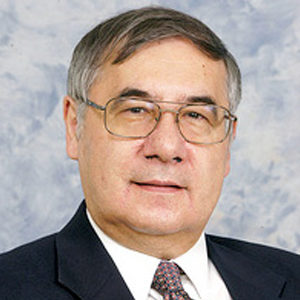 Dr. Bukur is Professor of Chemical Engineering at Texas A&M University (College Station and Qatar Campus) and holder of Joe M. Nesbitt professorship. His research interests have been in the areas of multiphase reaction systems and indirect coal/natural gas liquefaction via Fischer-Tropsch (FT) synthesis. His research group had made significant contributions in several areas of FT technology (catalysts design, reactor scale up, selectivity control and others). He has served as a consultant to several major oil and chemical companies in the US. He has received multiple awards for excellence in research including Senior TEES Fellow and Faculty Distinguished Achievement Award in Research from Texas A&M University. He was elected a Fellow of American Institute of Chemical Engineers (2000). He has over 100 peer reviewed publications in leading journals in Chemical Engineering and Catalysis.
Dr. Bukur is Professor of Chemical Engineering at Texas A&M University (College Station and Qatar Campus) and holder of Joe M. Nesbitt professorship. His research interests have been in the areas of multiphase reaction systems and indirect coal/natural gas liquefaction via Fischer-Tropsch (FT) synthesis. His research group had made significant contributions in several areas of FT technology (catalysts design, reactor scale up, selectivity control and others). He has served as a consultant to several major oil and chemical companies in the US. He has received multiple awards for excellence in research including Senior TEES Fellow and Faculty Distinguished Achievement Award in Research from Texas A&M University. He was elected a Fellow of American Institute of Chemical Engineers (2000). He has over 100 peer reviewed publications in leading journals in Chemical Engineering and Catalysis.
Research
Project: Modeling, optimization and dynamic analysis of fixed bed and milli-structured reactors for Fischer-Tropsch synthesis (NPRP 7-559-2-211)
The models of conventional and milli-structured fixed-bed reactors will be developed using a multi-scale approach. It will include the application of detailed kinetics, modeling of intra-particle mass and heat gradients, and computational fluid dynamics description of momentum, mass and heat transfer processes. Reactor simulations will enable a better understanding of physical and chemical phenomena determining efficiency and productivity. Rigorous optimization procedures will determine the most desirable reactor configurations, geometries and process parameters. A dynamic analysis of milli-structured reactors and of aspects of their operability and controllability will be considered. Desired outcomes of this research project are contributions to advancing state-of-the-art fixed-bed reactor modeling for FTS.
Collaborators:
Professors Nikola Nikacevic and Menka Petkovska
Faculty of Technology and Metallurgy
University of Belgrade
Belgrade, Serbia
Project: Intensifying methane reforming by combining carbonate and chemical looping (NPRP 5-420-2-166)
The goal of this project is to develop a process combining chemical looping with sorption enhanced methane reforming (CL-SEMR) to yield a highly efficient, low-carbon, economic hydrogen production process. The key to successful commercialization of the process is to develop an active and stable CO2 sorbent and an oxygen transfer materials (OTM). We will synthesize and evaluate a hybrid material, combining both functions (OTM and CO2 sorption), which would lead to higher energy efficiency. The results are expected to significantly advance progress toward the commercialization of the CL-SEMR process.
Collaborators:
Prof. Angeliki Lemonidou
Department of Chemical Engineering
Aristotle University of Thessaloniki (AUTH)
Thessaloniki, Greece
Facilities
Applied Catalysis Lab Facilities
This laboratory has ventilated hoods, cylinder cabinets (for flammable and poisonous gases) and CO/flammable detectors. At the present time there are two high pressure fixed bed reactors (ca. 30 cc), one slurry reactor unit (100 ml), and several gas chromatographs for analysis of gas and liquid products: Agilent 7890, Bruker 450, and Varian 3400 Series, plus GC/MS unit by Agilent (5975C).
Instruments for catalyst characterization are: BET surface area analyzer (Micromeritics – TriStar), Simultaneous TGA/DSC unit (TA Instruments – Model Q600), Multipurpose Catalyst Characterization Unit for temperature-programmed reduction, oxidation and/or desorption studies (Micromeritics –AutoChem II 2920), FTIR and Raman spectrometer (ThermoScientific) and quadrupole mass spectrometer (Hiden Analytical).
